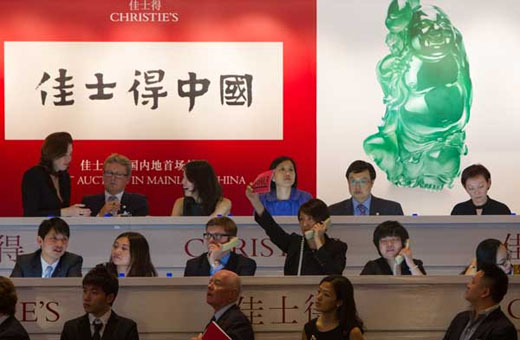China is the second-largest art market
Introduction:
Art Basel and UBS Global Art Market Report found that China accounted for 21% of the US$63 billion in global art sales last year in a market dominated by the world’s super-rich. Indeed, Asia’s market share is expected to increase as its wealth increases
The first fair in Shanghai attracted more than 60,000 spectators. With strong growth over the past several years, art is becoming increasingly popular in China. The multiplication of fortunes in the former Middle Kingdom is no stranger.
I. The country’s economic growth
Over the past decade, the relationship between supply and demand has become increasingly strong and has energized the Chinese market. This growth is part of a broader context of economic success. In 2017, China’s economy grew by 6.9% and the nominal GDP exceeded $12.5 trillion (10,227 billion euros).

At the same time, GDP per capita increased by 450%, causing HNWI (High-net-worth-individual: people with assets over $1M) to explode. This new class has a strong interest in the luxury markets, resulting in strong growth in sales of Chinese antiques and art.
II. Auction houses explode
The Chinese art market is now structured into two poles: the auction sector – which accounts for about 70% of the market, and the gallery and merchant sector.

Approximately 335 auction houses are present in China and are listed by the Chinese Auctioneers Association (CAA):
- 28% are based in Beijing
- 14% in Shanghai
- 14% in Hong Kong
III. Galleries and private dealers still materialized
The majority of galleries in China focus on contemporary art, while Hong Kong galleries specialize in antiques and decorative arts. Today, there are more than 6,200 galleries in China, with an average turnover of 3.3 million euros.

The majority of gallery sales are made on the premises of the so-called galleries. Although the majority of gallery owners admit that they do not make a large part of their online turnover, they trust dematerialization; 70% of gallery owners consider the Internet to play a positive role in their organization.
The presence of international customers is; Unsurprisingly; uneven for Chinese galleries. For example, nearly 59% of gallery sales were made to Chinese customers. However, 80% of galleries reported selling to foreign customers – mostly Swiss, American and Indonesian.
IV. A gluttonous importer
In terms of art, imports to China far outstrip exports. Since 2012, the main sources of Chinese imports have been the United Kingdom, France, India, and the United States.
V. Western art, the prerogative of the wealthy
Chinese painting and calligraphy are now the most sought-after styles of work, accounting for 56% of the market.
Collectors interested in oil painting show a preference for older and more realistic works.
Nevertheless, the general increase in wealth in China gives more weight to the Chinese art market and makes it more attractive. As a result, Chinese contemporary art is becoming more and more valuable.
Conclusion:
With China’s economic growth, the art market is growing and the rich Chinese are showing more and more interest in it. However, nowadays, art is not limited to auction houses. According to the 2016 figures, the online art market is expected to grow by 15% by next year. So it is important to take into account the digitalization of the Chinese market and new features being introduced as mini-programs on WeChat.






